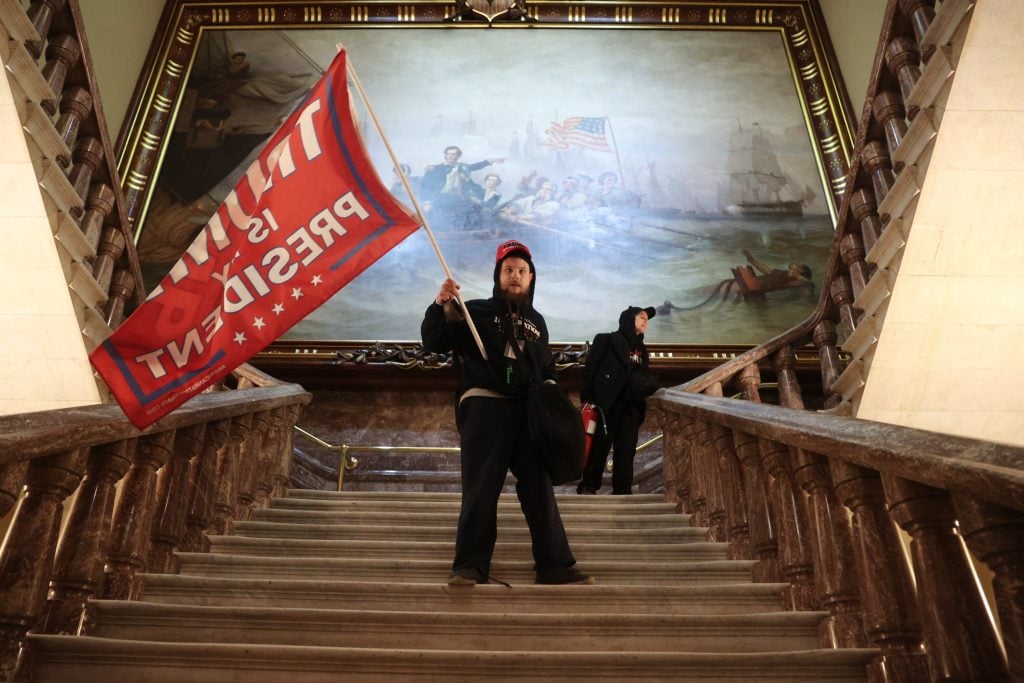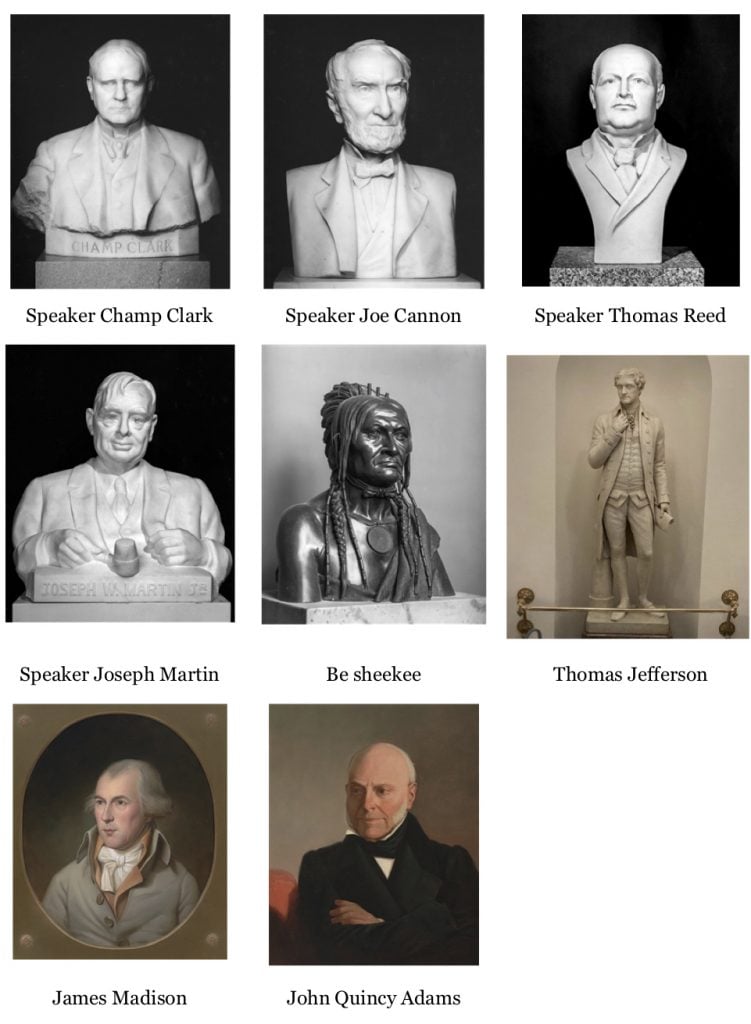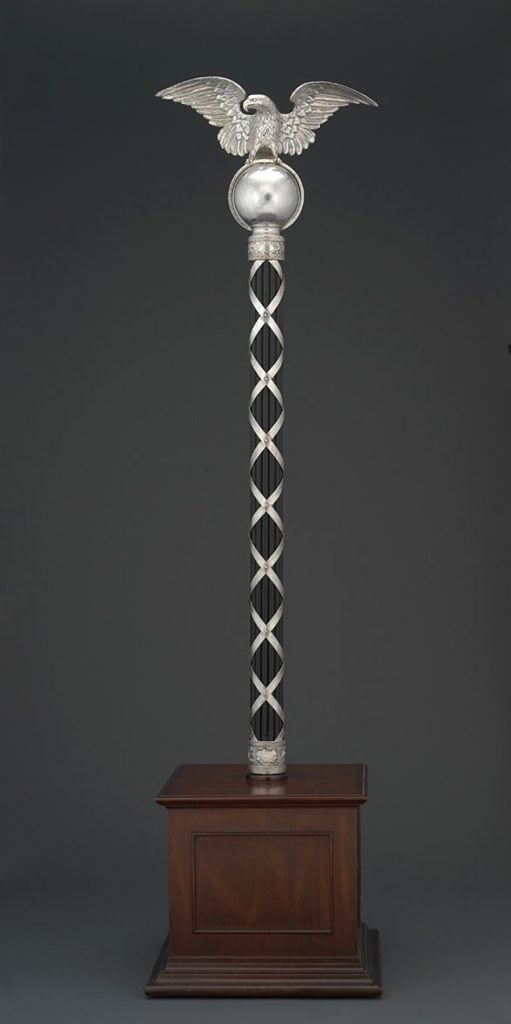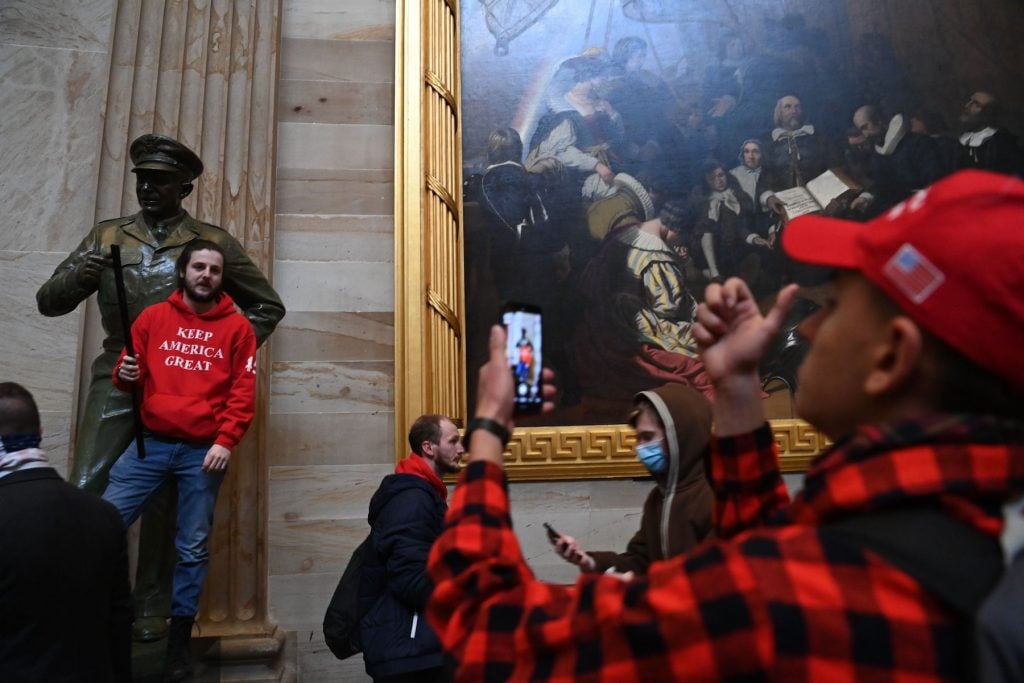Politics
The Curators of the US Capitol Art Collection Say They Need $25,000 to Fix Paintings and Statues Damaged in the January Attack
The bulk of the damage was caused by chemicals from fire extinguishers.

The bulk of the damage was caused by chemicals from fire extinguishers.

Sarah Cascone

A U.S. House of Representatives subcommittee will hear testimony today, February 24, from the architect of the Capitol and the House curator about the damage to the building and its art collection cause by the mob that stormed the U.S. Capitol on January 6.
“Statues, murals, historic benches, and original shutters all suffered varying degrees of damage, primarily from pepper spray accretions and residue from chemical irritants and fire extinguishers,” J. Brett Blanton, the architect of the Capitol, said in prepared testimony.
“This damage to our precious artwork and statues will require expert cleaning and conservation.”

These eight artworks are in need of conservation after the January 6 capitol invasion. Courtesy of the Office of the Clerk.
The Office of the Clerk, which has overseen the House collection of fine art and artifacts since 1988, is requesting $25,000 in emergency funding to cover the cost of restoring and repairing damaged artworks. The house’s 13,000-object collection includes 535 works currently on view in the Capitol and House office buildings.
“During the riot, courageous staffers saved several important artifacts of the house’s legislative history. Quick thinking by a journal clerk secured the house’s 1819 silver inkstand, the oldest object in the Chamber,” House of Representatives curator Farar Elliott said in prepared testimony.
House sergeant at arms Paul D. Irving was also able to evacuate the chamber’s ceremonial silver mace. A symbol of the house’s legislative authority, it was created by silversmith William Adams in 1842 to replace the one destroyed by the British army in 1814—the only other time the nation’s capital has been occupied by an invading force.

William Adams, Mace of the US House of Representatives (1841). Photo courtesy of the US House of Representatives.
The Architect of the Capitol staff was also forced to react quickly. “AOC employees sheltered congressional staff in their shops to protect them from the roving mob,” Blanton said. “Other members of our team raced to the roof to reverse the air flows within the building to help clear the air of chemical irritants.”
But the mob still caused considerable damage, tracking wet paint from newly built inaugural platforms across historic stone balustrades and hallways inside the Capitol building. Rioters tore two of the 14 historic bronze and glass lanterns designed by Frederick Law Olmsted from the grounds, and shattered window panes as they breached the building.
(The Architect of the Capitol is preserving some of the broken pieces “for a potential presentation or display,” Blanton said.)

Supporters of US President Donald Trump enter the US Capitol’s Rotunda on January 6, 2021, in Washington, DC. Photo by Saul Loeb/AFP via Getty Images.
Inside the House, eight artworks are believed to be in need of conservation measures, Elliott said.
Among them were an 1858 bust of Chippewa statesman Beshekee, a statue of Thomas Jefferson, and marble and granite busts of four house speakers (Joe Cannon, Champ Clark, Thomas Brackett Reed, and Joseph Martin). Contemporary copies of historic portraits of James Madison and John Quincy Adams were also damaged.
“Their frames, plinths, pedestals, and niches were covered in a fine powder, likely residue from a chemical spray,” Elliott added. Tests conducted by Smithsonian Institution conservators determined that the statues had been sprayed by a fire extinguisher.
“Fire extinguisher particulate contains a yellow dye that can discolor the surfaces it touches, particularly porous stone such as marble,” Elliott explained. “The treatment plan we will undertake in the coming weeks will remove the dye-infused oil.”
To stabilize the statues until such work can be done, the busts have been wrapped in museum-grade plastic. If the cost of restoration work is less than the requested $25,000, the office of the clerk plans to put the rest of the funds toward ongoing conservation projects for objects in the House collection.